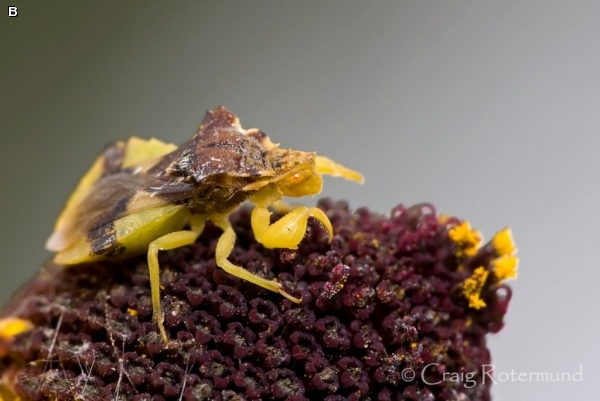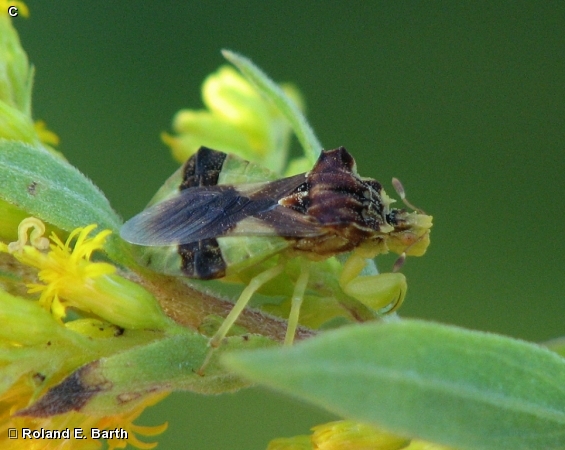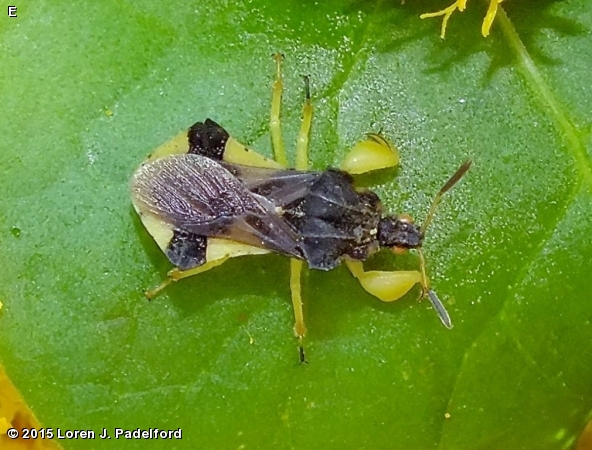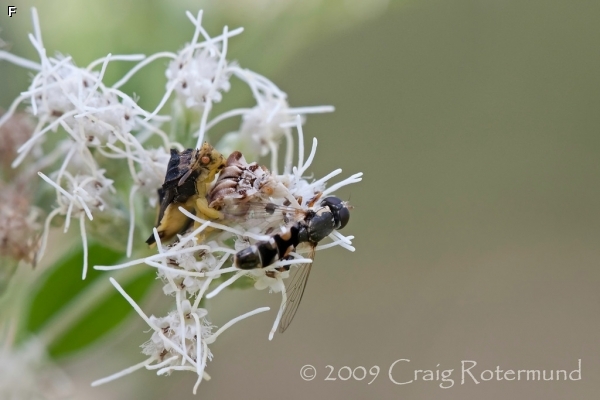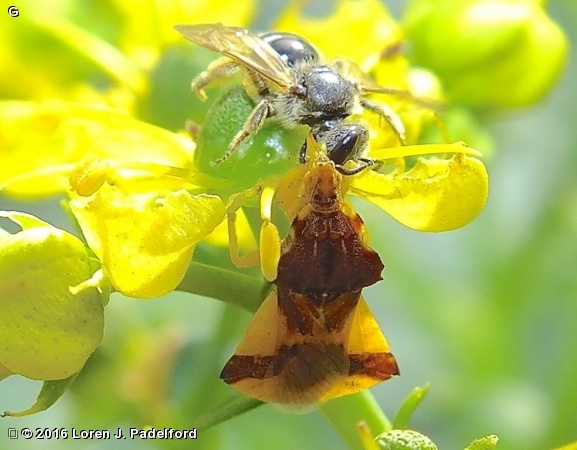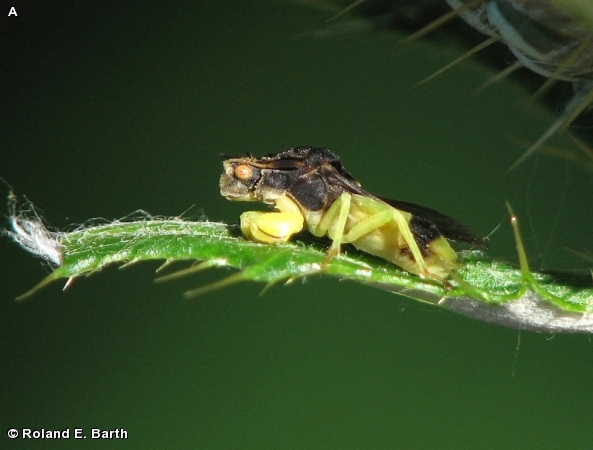
This ferocious looking bug has yellow to green coloration, with some dark brown as well. These colors serve to camouflage it while it sits in ambush (1) waiting for prey often larger than itself (3). This bug is about 1/2 inch (13 mm) long at maturity. It has strong forearms to grasp and hold its prey while injecting immobilizing saliva. Their clubbed antennae are seen folded back into a jagged prothorax (1). This one can’t be identified down to species because of several similar species. Image 5 shows a pair mating; the female has a rare, lighter coloration.
This bug is so well camouflaged that it is not often seen, but when seen, it is usually in or near flowers where it waits for unsuspecting pollinators of just about any size.
The two most common species of this bug in eastern North America are P. pennsylvanica and P. americana. These images are almost certainly one of those species. P. pennsylvanica is considered to be the more common of the two. There are about 17 described species and several undescribed species of Ambush Bugs in North America. Eggs are laid on plant material and survive through the winter. Nymphs hatch in early summer and they go through 5 molts to become adults. Ambush bugs are predaceous at all stages.
Disclaimer: The content of NatureSearch is provided by dedicated volunteer Naturalists of Fontenelle Forest who strive to provide the most accurate information available. Contributors of the images retain their copyrights. The point of contact for this page is: Loren Padelford.

 Identification
Identification